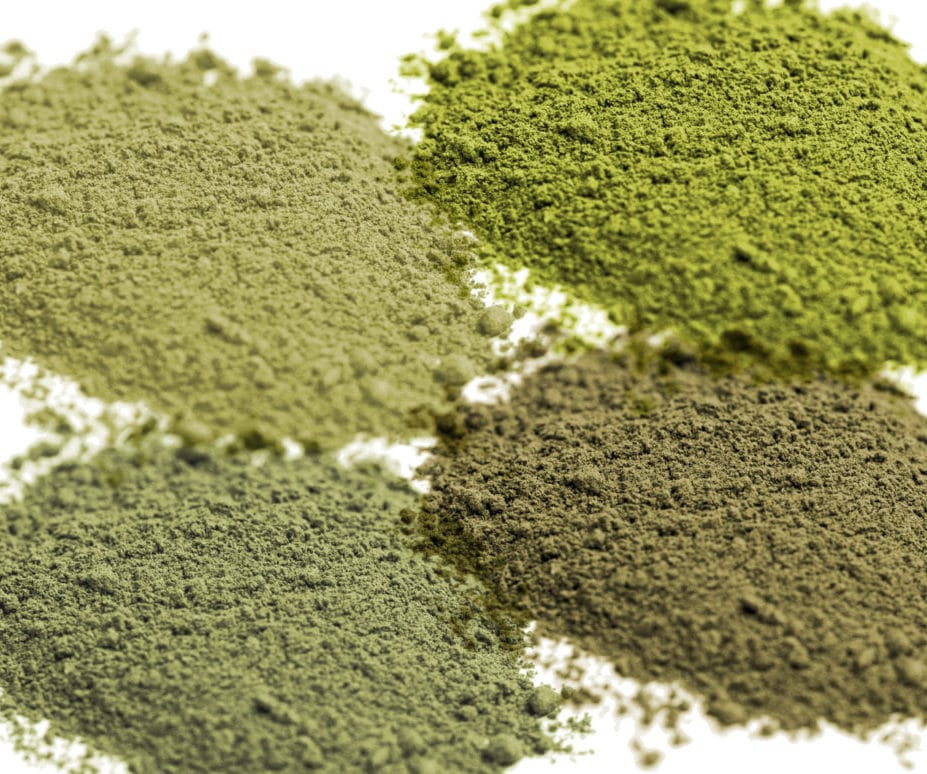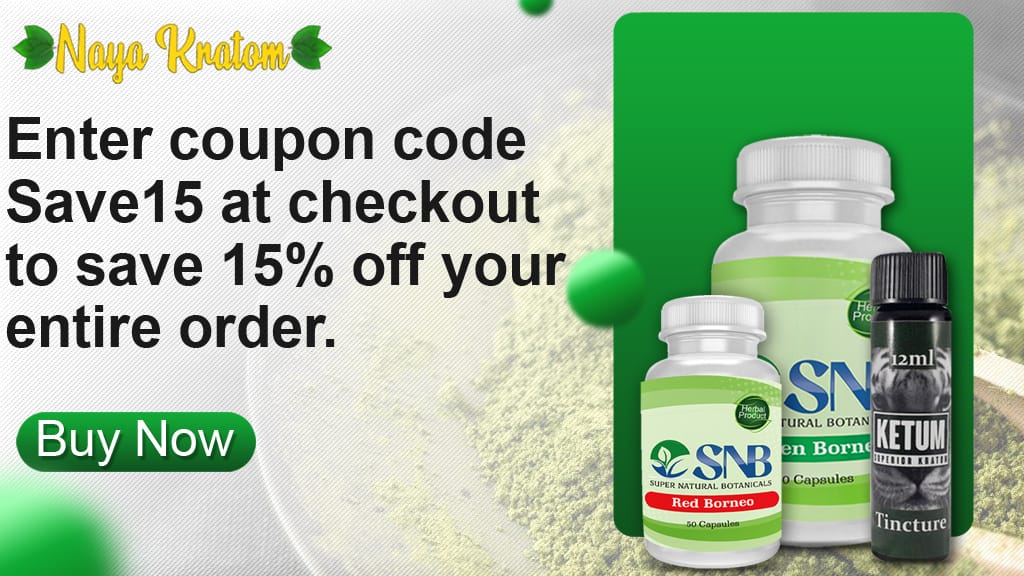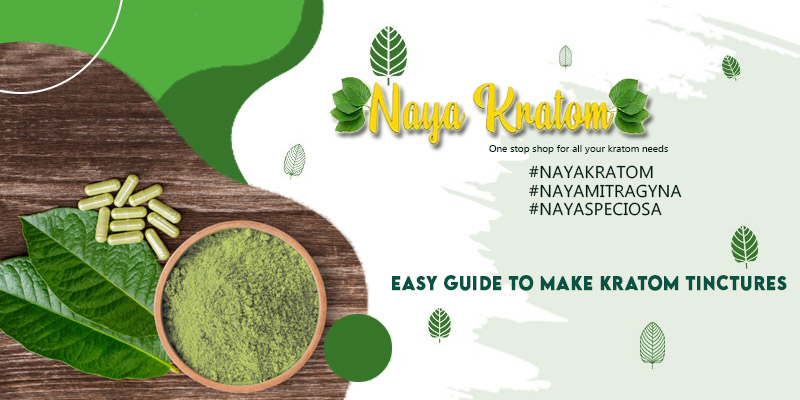Tinctures are an exciting alternative to taking your daily Kratom dosage– more so if you are not a kratom fan or a beginner.
Perhaps your goal is to have less and yet feel more? In that case, finding and consuming the most potent source of Kratom such as tincture is all you can wish for. The cherry on top is: they are not only easily available, but one can prepare it from the comfort of their home through some incredibly simple and easy steps. High on alkaloid content, kratom tinctures are undoubtedly the most popular and potent kratom extracts. This post will give you all the reasons to convince you to immediately switch to kratom tinctures and experience a quality treat by making one with our recipe.
What is a kratom tincture?
Kratom Tinctures are concentrated herbal extracts made with alcohol. They are packed full of all the beneficial compounds, alkaloids, and organic components of kratom and are easier on the tongue. Where you may need 2 to 3 cups of tea to achieve the desirable Kratom benefits, with tincture, even a dropper can do the game.
Types of kratom tincture
Kratom tincture comes in different varieties based on its composition. The most popular kratom tincture is the full spectrum containing all the compounds normally present in kratom powder. Tinctures with altered alkaloid content of your choices, such as those containing more 7-hydroxy mitragynine or more mitragynine, can also be prepared. They are referred to as the isolated tinctures and are generally made for special purposes.
Why should you prefer kratom tincture over kratom powder?
Kratom powder characterizes a bitter raw grassy taste. While many consumers have no problem with its strong pungent flavor, others cannot tolerate it. On the contrary, tinctures taste a lot better than kratom powder.
Besides, it can be customized to prepare isolated extracts to be used in specific conditions. Another advantage over kratom powder is that tinctures are liquid form and fast to assimilate and quick to produce results. Finally, its concentrated source means you will need to consume less quantity than your regular powder dose to bring similar effects.
The liquid extracts are also easy to store and have a longer shelf life. A properly stored tincture is even better than fresh extracts. So, don’t worry if you forget about your tincture jar and explore it many times later. You can still drink it unless bacteria and molds do not invade it.
Which strain is best for making kratom tincture?
The Kratom family is diverse, constituting a plethora of different kratom strains and colors. Surprisingly, all of them can be used for making extracts. And, the final result will yield the same alkaloids and compounds at the end that were present in the original powdered strain used as the base ingredient.
In order to come up with the most potent and fast-acting extract, you should use strains that best suit you and your needs- preferably the ones you have already tested. There is no harm in testing new strains, but it’s always a wise idea to have your standard tincture by your side in case the new does not work.
The general rule of the thumb is to use a high-quality strain bought from a trusted buyer.
What is the easiest recipe for making kratom tincture at home?
Due to the FDA’s strict policies on restricting the use of kratom, kratom extracts are not easily accessible, and those widely available are not as effective as they should be. Preparing your own tincture is the best thing you can do. The recipe below is for making an all-spectrum kratom tincture that is the most potent and widely consumed and can be made with any strain of your choice Materials.
● A measuring scale used for measuring kratom powder
● A big container that can be sealed, , a mason jar or a simple glass jar
● Bottles made of dark glass for storing the extracts
● Cheesecloth or a strainer
Essential ingredients
● Powdered kratom (4 ounces) or Kratom leaves
● Ethyl alcohol (1 liter for 4 ounces of kratom powder)
● pH strips for checking the pH
● Citric Acid
Directions
Now follow these simple steps to make your own kratom tincture.
Kratom tinctures can be prepared by using powder, leaves, or both. Next, it involves mixing the ethanol in this powder or leaves with a bit of trick.
With leaves
If you are starting with leaves, then take 100 grams of it in a glass container and mix them with water and ethanol.
With powder
Measure the required amount of powder i.e., 100 grams on a measuring scale. Pour it in a glass container and add a liter of alcohol for every 4 ounces. Our ratio in this recipe is 4 ounces of powder with 1 liter of alcohol. Stir for a while so that powder and alcohol mix well.

Adding citric acid
Whether you started with the leaves or powder, the next step is to add citric acid. The best way is to start by adding a little while simultaneously checking if your strip is recording the change. Note the initial reading. Now gradually add citric acid until the pH reaches 4. It’s better to reach a little lower than four then stopping at a higher. This acidic environment is what converts the alkaloid into salts.
The most easily interpretable pH indicators are Universal indicator strips. Universal indicators exhibit different pH in colors similar to a rainbow. It is red to orange for acidic solutions, and then as we move towards the neutral liquids, it changes from green to grey. Finally, for alkalies, the strip shows blue and purples.
In our case when we dip it in, it will initially be blue but as we start to add the acid, it will move towards yellow. Stop adding citric acid once the strip is orangish-beige because it is where the pH reaches 4.
Sealing the jar and storing it
Stir the contents once again to ensure thorough mixing. After that, put the mixture in a sealed jar and keep it in a cool, dry place for at least a week. This step ensures that the alkaloids are fully and completely extracted from the powder or leaves. After you have sealed it properly, shake for a few minutes for better mixing.
The mixture should not be exposed to sunlight. Storing it for more than a week is often preferable as it yields the extracts fully. However, one week is also sufficient.

Straining the mixture for any excessive powder
After it’s been a week and the mixture has soaked well, you can move towards the straining part. Shake the jar for a few minutes before opening the seal. Now strain the mixture by covering the mouth of the jar with a cheesecloth. Pour the mixture through the strainer into a bowl or other glass container. If any leaf or powder is settled at the bottom of the jar, remove it and pour the strained liquid back into the glass container.
Covering the jar with a fine mesh for better evaporation
Proper evaporation of the liquid is integral to reach desired concentration and potency of the tincture. To achieve that level of evaporation, you can cover the jar with a mesh cloth such as cheesecloth.
This simultaneously ensures that no debris or dirt enters the container. However, you can allow as much evaporation as you want based on the concentration you are looking for.
To allow sufficient evaporation, you can leave the container covered with the cheesecloth for about 3 to 4 days or until half of the initial quantity remains. During this process, the excessive alcohol evaporates, leaving all the essentials behind. This step intends to achieve the desired consistency without affecting the alkaloid content.
Filling it in bottles to increase shelf-life
Although this step is not compulsory, filling the tincture in bottles makes it easy to store and use. To fill small-mouthed bottles, it is recommended to use a funnel to prevent the tincture from spilling. Seal the bottles and label them with the date of preparation or any other details you like.

How to select the best alcohol?
Tinctures are best made with high-proof food-grade alcohol that is safe for drinking. And to dissolve the powder better, you should use a sufficient amount of alcohol. Most people prefer brands that are potent and safe for consumption. And refrain from using isopropyl alcohol. It is not at all safe for making tinctures.
Can we use something else in place of alcohol?
For tinctures, alcohol is by far the best choice, but glycerin can be the safest resort for all those looking for alternatives. In addition to that, you can also use plant-based oil. The resulting mixture is more of an infusion than a tincture.
While the final decision remains in your hand, it is worth remembering that tincture produced from glycerin will be less potent than that made with alcohol.
Perhaps, the other way round is extracting contents in alcohol and introducing glycerin later on. The resulting liquid will have the potency of alcohol and the foundation of glycerin.
How can you get the best of your kratom tincture?
Getting the best out of your kratom extracts entirely depends on the dosage and the mode of consumption.
The right dosage
Taking the right dosage is essential to optimize your experience. Like with kratom powder, there are no strict lines of doses for kratom tincture. Everyone reacts to kratom extracts differently. And, it is only through self-experimentation that you can land at your desired dose.
However, to find the tincture potency prepared, divide the number of grams of kratom powder initially taken with the volume of the resulting tincture. This gives you the potency per ml of your plant extract. From here, you can self discern your desired dosage to attain the maximum benefits.
If you are a novice consumer or newly switching to kratom extracts, it is always recommended to start with small amounts and gradually increase as your body adapts.
The ways of consumption
There are three basic ways of consuming kratom and plant extracts. These include:
- Sublingual way
- Mixing it with other foods and drinks
- Swallowing
Taking kratom extracts sublingually
Sublingual dosing involves pouring the intended dosage of kratom tincture under the tongue for about 40 to 60 seconds and swallowing it gradually. The area beneath the tongue is rich in blood vessels that readily absorb and transport the alkaloid content directly in the blood. This explains why sublingual delivery is deemed the most efficient and fastest of all methods. Mixing it with other foods and drinks
Kratom tinctures can also be added to customized recipes to make them more acceptable for the taste buds. It makes them more flavorful, palatable and easy to take. Although the onset of the reaction is relatively slower, for those who do not like the taste of kratom, this is no less than a treat.
Simply swallowing it
The simplest way of taking a kratom tincture is to swallow it. This is an ideal go-to method and requires no effort. It is ideal for those who are always in a hurry but do not want to miss their dosage. Although it does not guarantee instant absorption as in the sublingual method, it’s insanely hassle-free and the go-to choice of many consumers.
The bottom line
While there are many ways of having your daily kratom doses, tinctures are hands-down the most efficient way of tapping on all the benefits rather quickly. However, the best bet is preparing your own kratom tincture with high-grade alcohol and the best quality strains. Hopefully, our detailed step-by-step guide saves you from searching pages and pages on the internet. It is the most authentic yet easiest recipe.
All the best for your endeavor. Don’t forget to share your experience with us. Also, feel free to share any other tips or valuable suggestions you have.
A word of caution
Tinctures are more potent than regular kratom; therefore, design your dosages keeping that in mind. To be on the safe side, always start with less. In addition to that, the information compiled and presented herein is based on consumers’ personal experiences and not backed by any scientific research.




One Comment
Is there a way to shorten the rest time or does it have to be a week and what is the yield ratio of extract per oz of raw material